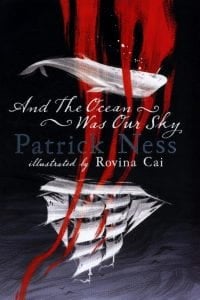 Once there were wolves in Scotland – until they were viewed as too great a threat to farmers and their animals. In fact, in 1577, James VI made it compulsory to hunt wolves three times a year.
Once there were wolves in Scotland – until they were viewed as too great a threat to farmers and their animals. In fact, in 1577, James VI made it compulsory to hunt wolves three times a year.
Thus hunting them was rewarded, and the last wolf was reportedly killed in 1680 in Killiecrankie (though there are reports that wolves survived in Scotland up until the 18th century). The long-term consequence of this was major destruction of woodland, overrun by the deer population and other herbivores. They were no longer culled naturally by wolves, the apex predator in the forest ecosystem.
Biologist Inti Flynn arrives in Scotland, leading a team of scientists which aims to reintroduce the grey wolf into the remote highlands. The team’s aim is twofold – to increase wolf numbers in the wild and to heal the landscape. Inti also needs to heal her twin sister, Aggie.
Not unexpectedly, the local farmers and villagers are very wary of the scientists’ plans, fearing their animals and families might fall prey to the wolf packs which are to be introduced. They remain blind to the true nature of wolves and their place in nature.
Inti’s passion for her wolves is deep, and due to a rare condition of mirror-touch synaesthesia, she can even sense their feelings, as well those of others she observes. Her childhood experiences with her twin sister, Aggie, provide some extreme examples of this and have left them both broken to different degrees.
With the disappearance of a local man, the ongoing opposition to their rewilding project comes to a head. Who/what will be blamed?
Naturally, Inti fears for her wolves. But who can she turn to? Who can she trust? Will her upbringing enable her to discover the real truth? And can she bring Aggie back to her senses?
 Through Inti’s experiences, Charlotte McConaughy writes a sensitive and sensual discovery of the need to accept the role of wild creatures. Some locals are won over, but fear of the unknown echoes through much of the population.
Through Inti’s experiences, Charlotte McConaughy writes a sensitive and sensual discovery of the need to accept the role of wild creatures. Some locals are won over, but fear of the unknown echoes through much of the population.
McConaughy provides both poetic and informative descriptions of the wild, while she slowly reveals details about the nature of the people in this tale. In this, there is much to keep you guessing – and much to give you hope…
For more about the reintroduction of wolves to Scotland, start with this article:
 As the COVID-19 virus eats into our grocery and other supplies, perhaps it’s time, while we cool our heels at home, to reconsider our consumption.
As the COVID-19 virus eats into our grocery and other supplies, perhaps it’s time, while we cool our heels at home, to reconsider our consumption. Patrick Ness, the author of ‘a Monster Calls‘ and ‘the Chaos Walking‘ trilogy, is known for looking at things from a different perspective – so the inverted point of view in ‘And the Ocean was our Sky‘ should come as no surprise.
Patrick Ness, the author of ‘a Monster Calls‘ and ‘the Chaos Walking‘ trilogy, is known for looking at things from a different perspective – so the inverted point of view in ‘And the Ocean was our Sky‘ should come as no surprise.
